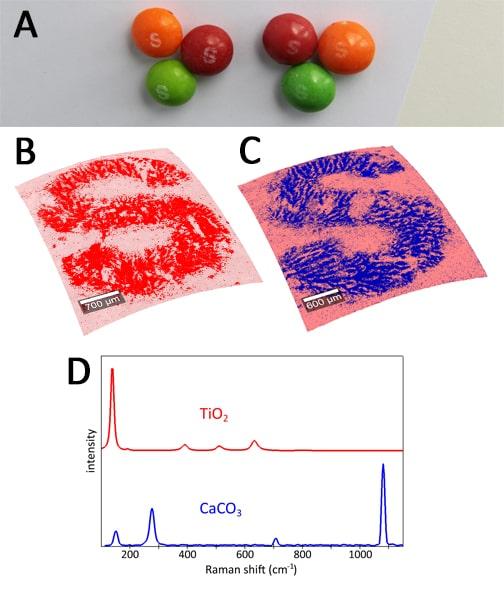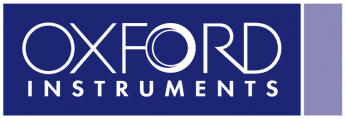Sep. 2, 2021
运用拉曼技术检测食品中的添加剂:二氧化钛
Raman microscopy detects titanium dioxide in food samples
Titanium dioxide (TiO2) has long been used as a white pigment (E 171) in the food industry. Recently it’s been subject to increased scrutiny due to concerns that it might be carcinogenic. In May 2021, the European Food Safety Authority (EFSA) announced that the substance can no longer be considered a safe food additive (EFSA web news). This led European food manufacturers to replace TiO2 in their products with alternative white pigments.
Raman imaging microscopy is a very effective method for analyzing food additives and TiO2 is especially easy to detect as it exhibits a strong Raman signal. This study is a comparison of the same kind of candy produced for two different markets: the EU and the USA. All of the pieces have a white “S” printed on their colorful coatings (A) and Raman analysis reveals the chemical identities of the pigments used. The measurements were performed with an alpha300 R equipped with a 488 nm excitation laser and TrueSurface technology for topographic Raman imaging and active focus stabilization.
Raman imaging clearly distinguished the print from the surrounding sugar coating in both candies and the topographic Raman images show their curved surfaces (B and C). The white pigments forming the S were identified by their Raman spectra as TiO2 in the USA candy (red in B and D) and calcium carbonate (CaCO3) in the EU candy (blue in C and D). Raman spectroscopy can even differentiate crystal forms of TiO2; The print in the USA candy consists of anatase (B and D).





 公安机关备案号31010402003473
公安机关备案号31010402003473